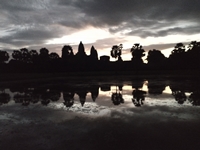
01 Feb Siam Reap Cambodia and Angkor Wat Temples
SIAMREAP – The City
On arriving at Siam Reap airport we were met by our transportation from the hotel = a Tuk Tuk. SInce we had everything we own in our two large suitcases, two small suitcases, and two backpacks we were worried about loading. Our driver managed to get all of it balanced on the Tuk Tuk plus us and away we went to the hotel – Boutique Indochina d’Angkor where we had a Haneymoon Suite (see photo). T Latethe hotel was well equipped and had a wonderful pool where everyone hung out during the day enjoying their food and drinks. Later that day we went to Pub Street which was two blocks of restaurants and bars.

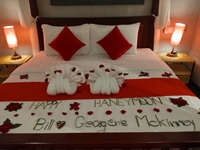
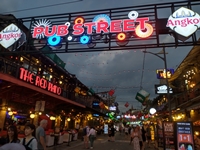
Not only did we enjoy the local restaurantsM we also took tasting tours where even the smallest restaurant could surprise you with a Michelin Star rating. Our nicest night out was at a fancy restaurant where we enjoyed roasted “black mountain” pig. We also visited a local monastery which was nearby. Although monasteries were frequently seen in Asia, this was the most beautiful of the bunch so worth a mention and a photo.
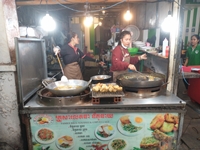
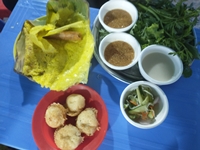
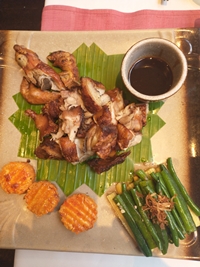
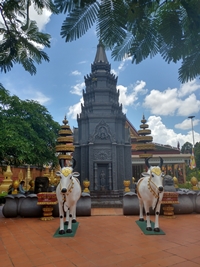
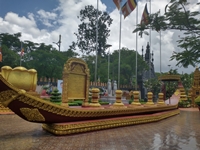
Our last tour was to a floating city where everyone lived on small house boats and made a living fishing. Nearby was a Lotus Plant factory which employed over 500 women to strip the fibers off the Lotus stems which were then used to produce lovely fabrics, scarfs, and dresses.
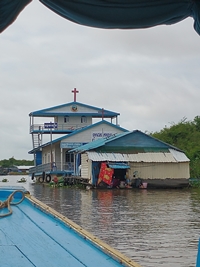
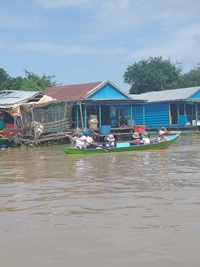
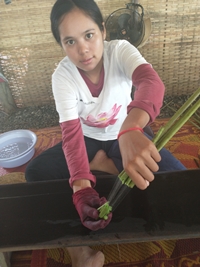
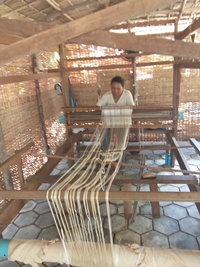
ANCIENT TEMPLES
For two days, we had a driver and guide taking us to the Angkor Wat temples. We thought there was one temple, but discovered there were many more and went to see seven over a two-day period. Sometimes the temples were close and some were a 45 min drive away. The days were extremely hot and humid. Fortunately, after each trek, our driver had ice cold wash clothes soaked in lemongrass water which were very refreshing. The temples were built around 900 AD and 1100 AD by the whoever was the ruling King. Wars were fought frequently and the new King would build additional temples in honor of themselves, their wives, or even their mothers. The wars were between Buddist and Hindu kings and the winner would modify (tear down or modify existing statures) to make the older temples match their religion.
Many of the temples were abandoned and forgotten for unknown reasons. In the late 1800s and early 1900s they were discovered in the jungles. Often the temples had an outer gate and then an inner gate as much as half a mile away. Frequently they had two corriders, a north south and east west with a central area with a stature or memorial of special significance.
Below are photos arranged by location. The Ta Prehm temple was used for the filming of Laura Croft: Tomb Raider and when you watch the film you will recognize some of the photos. You will also notice in some cases that the trees grew so large that they crushed the hallway corridors.
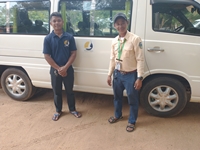
Pre Rup Temple
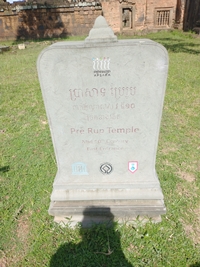
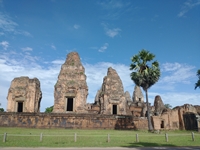
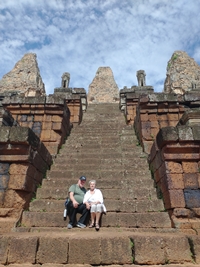
Neak Poan
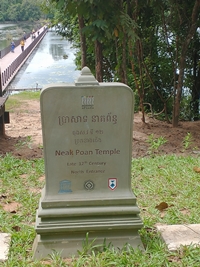

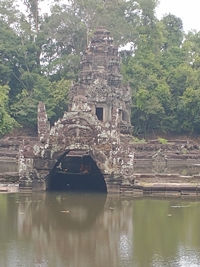
Preah Khan Temple
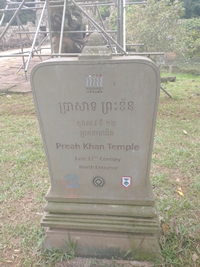
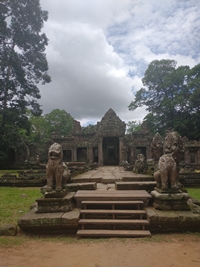
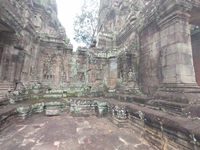
Banteay Srel Temple
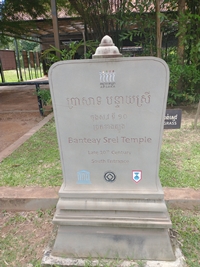
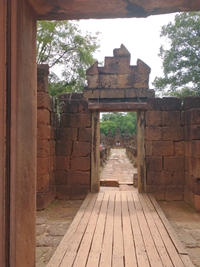
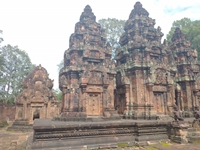
ANgkor Wat Temple
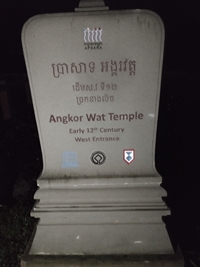
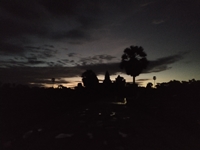
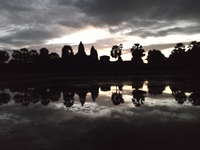
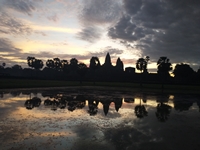
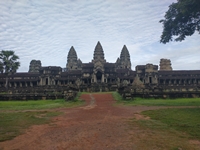
Ta Prohm Temple

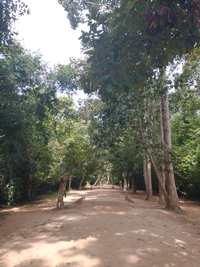
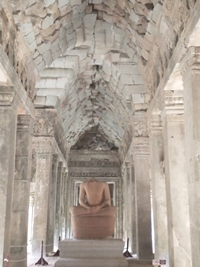
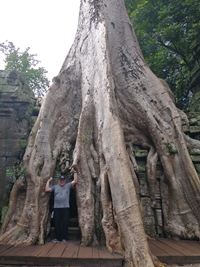

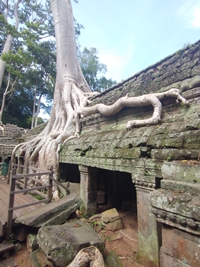
Bayon Temple
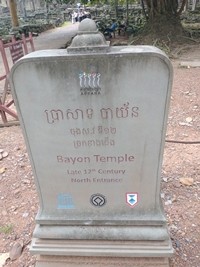
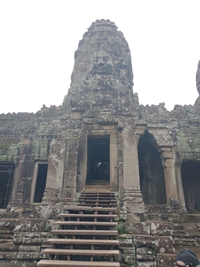

No Comments